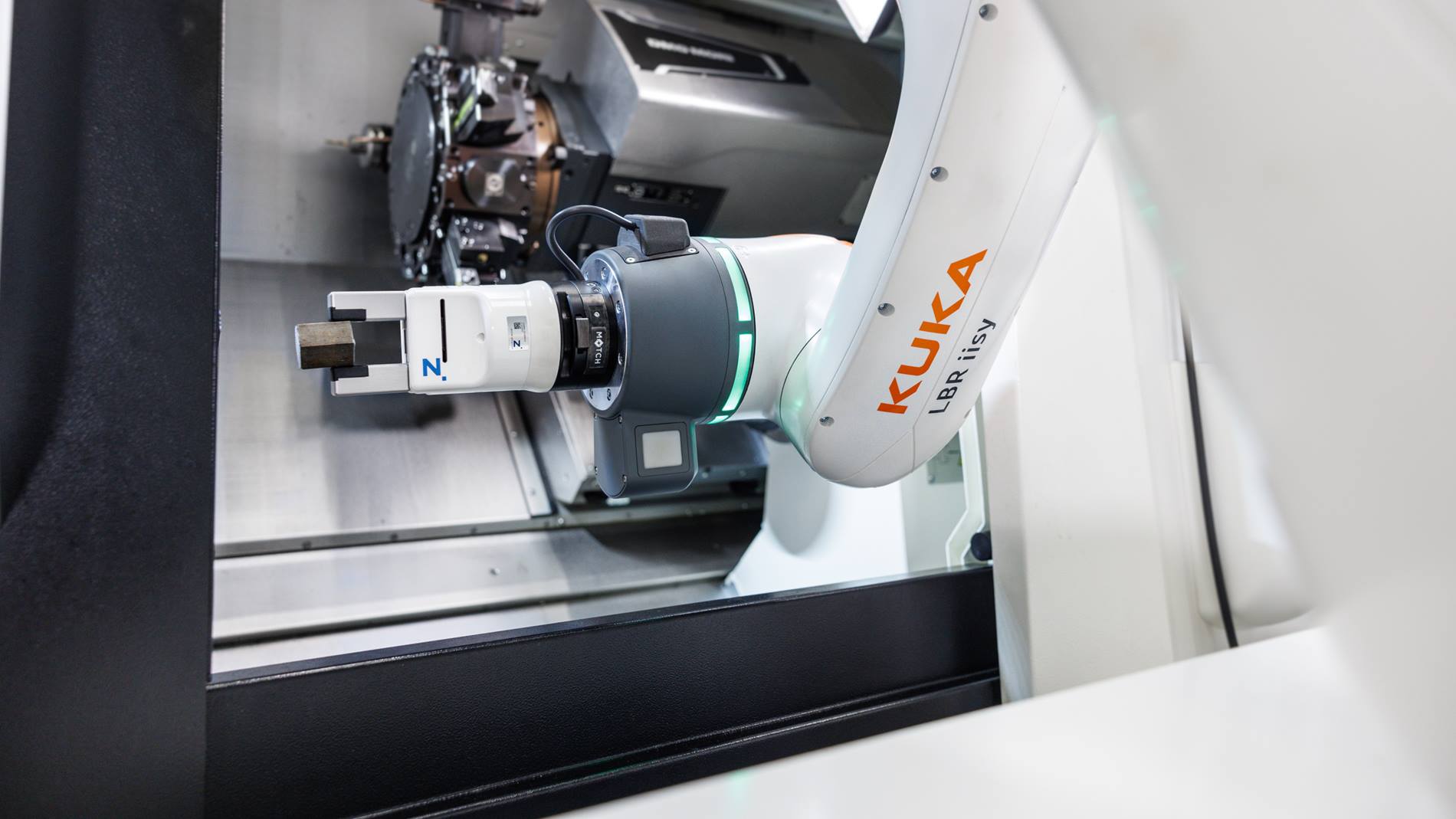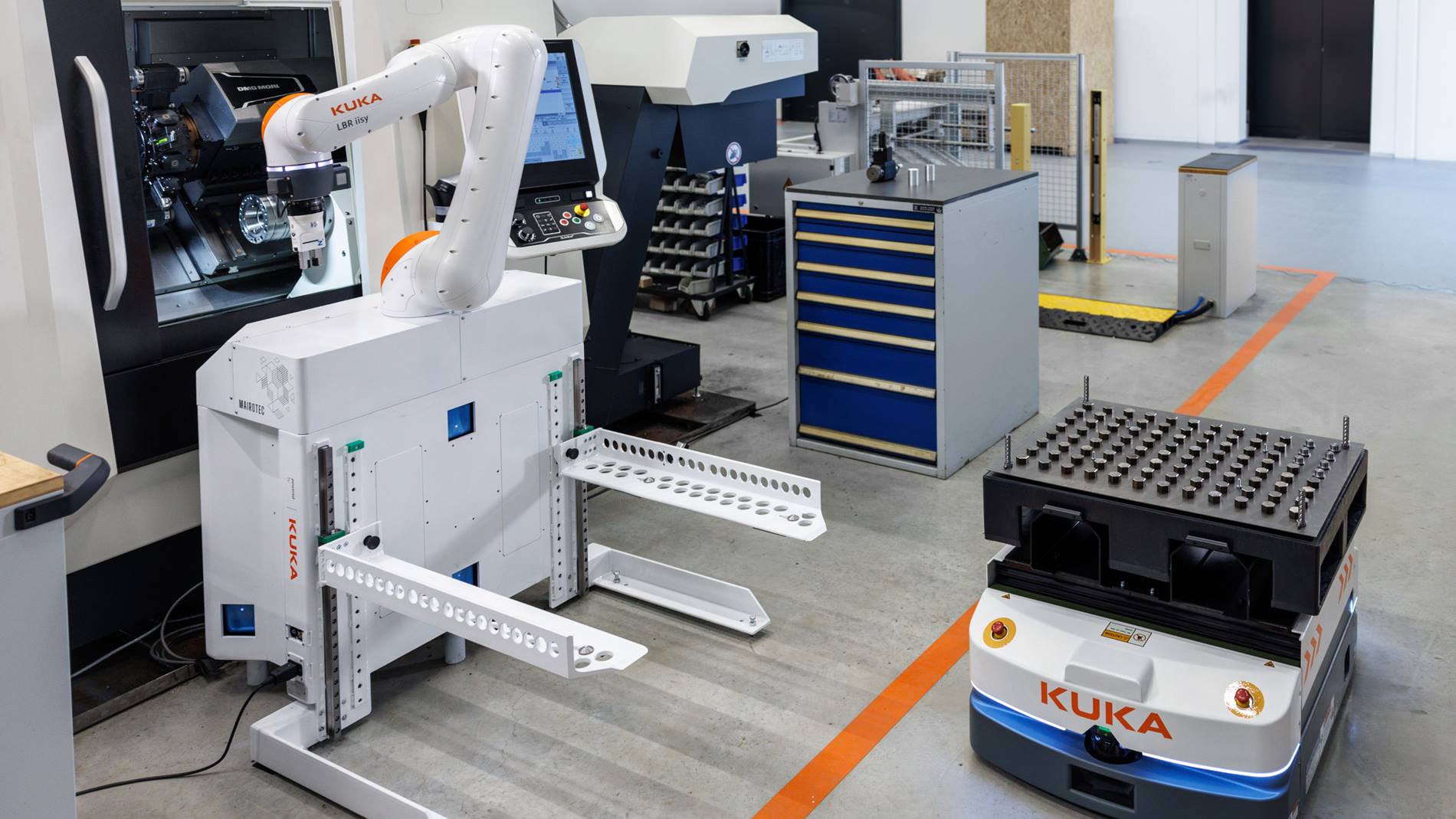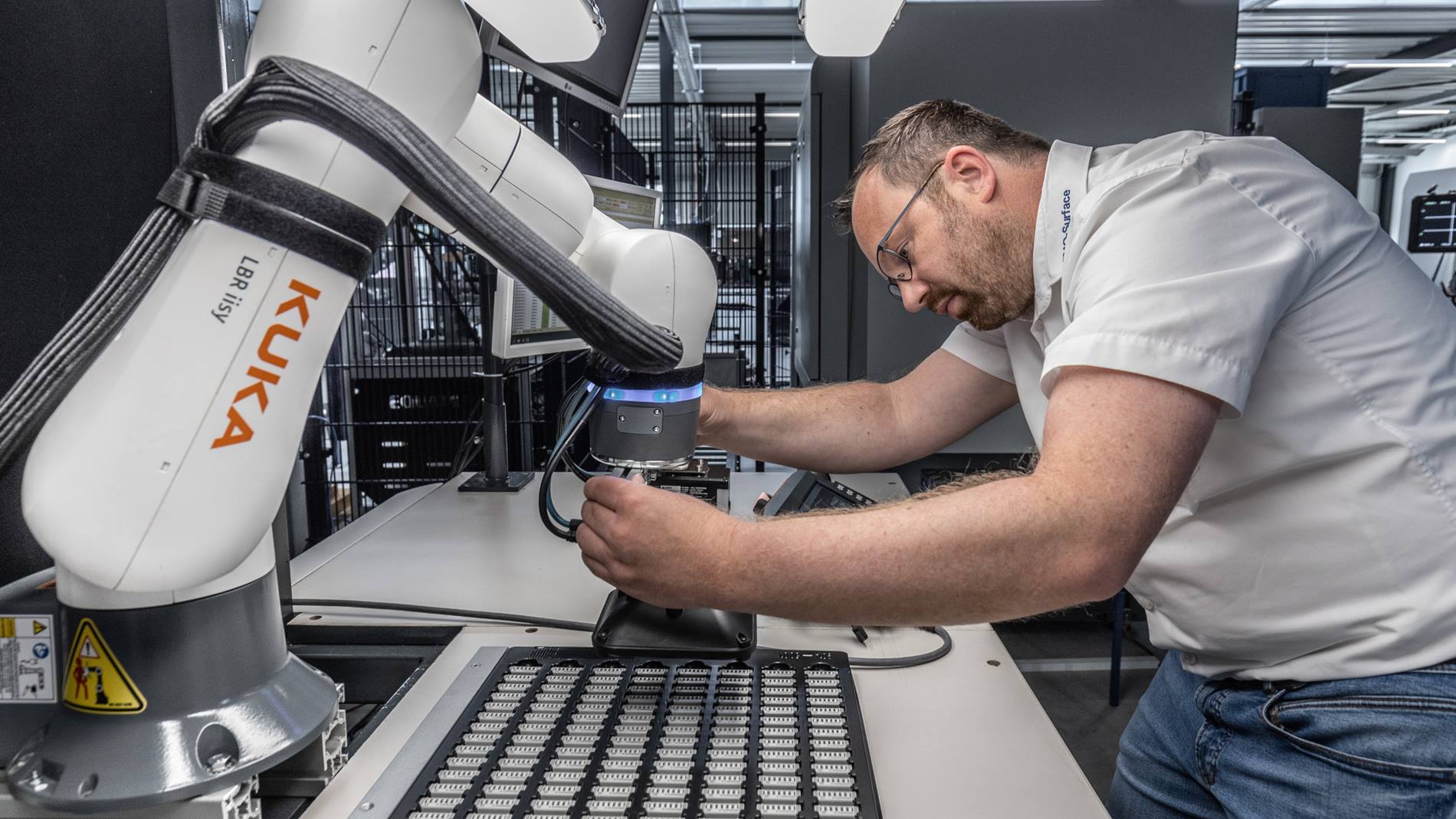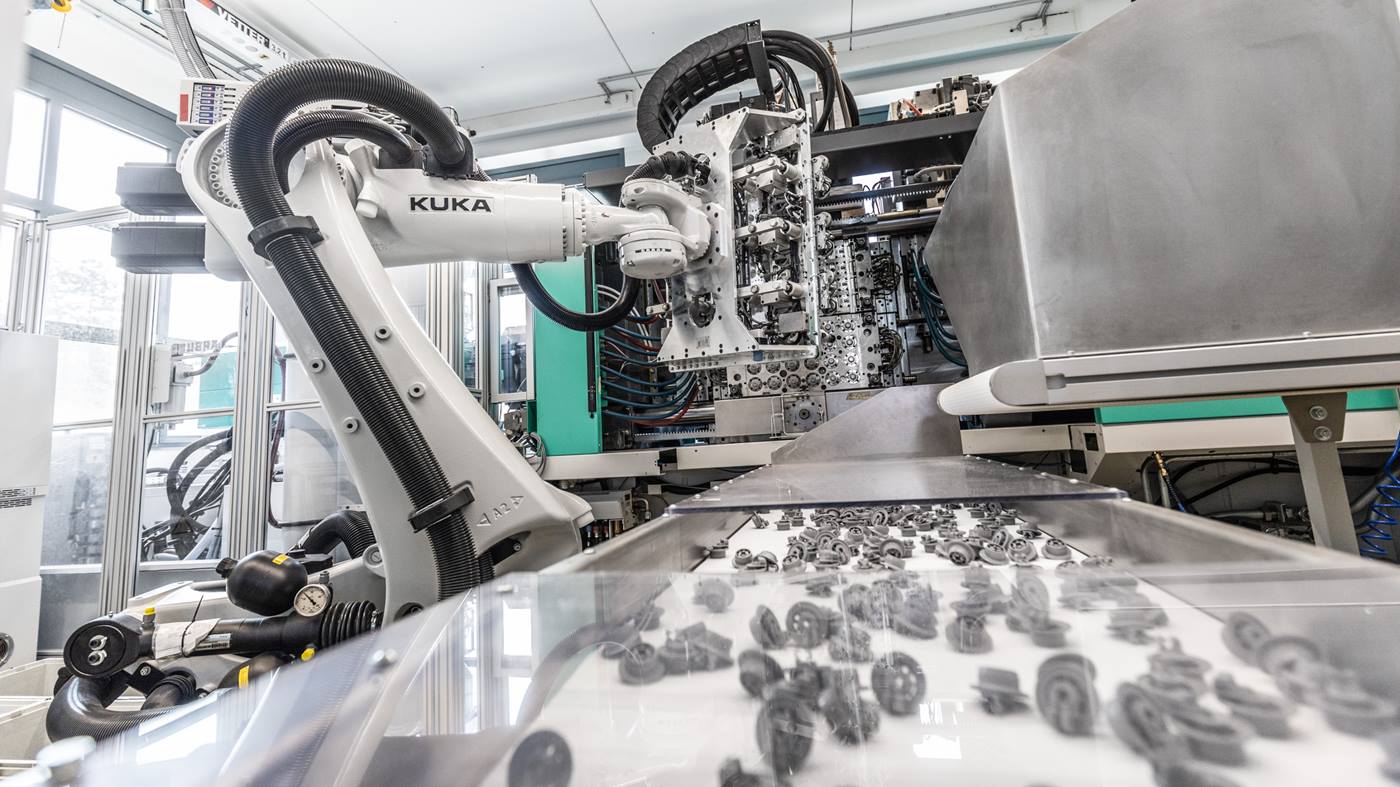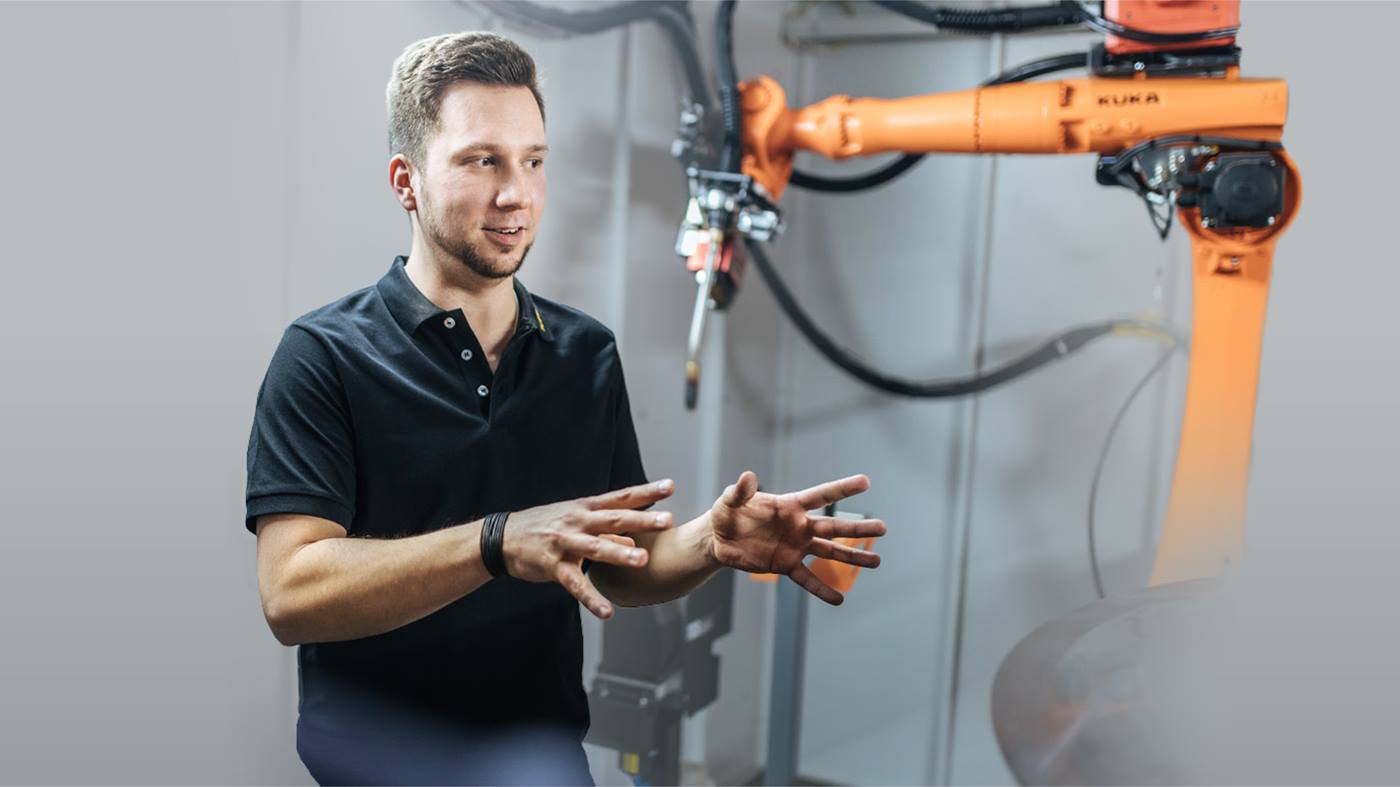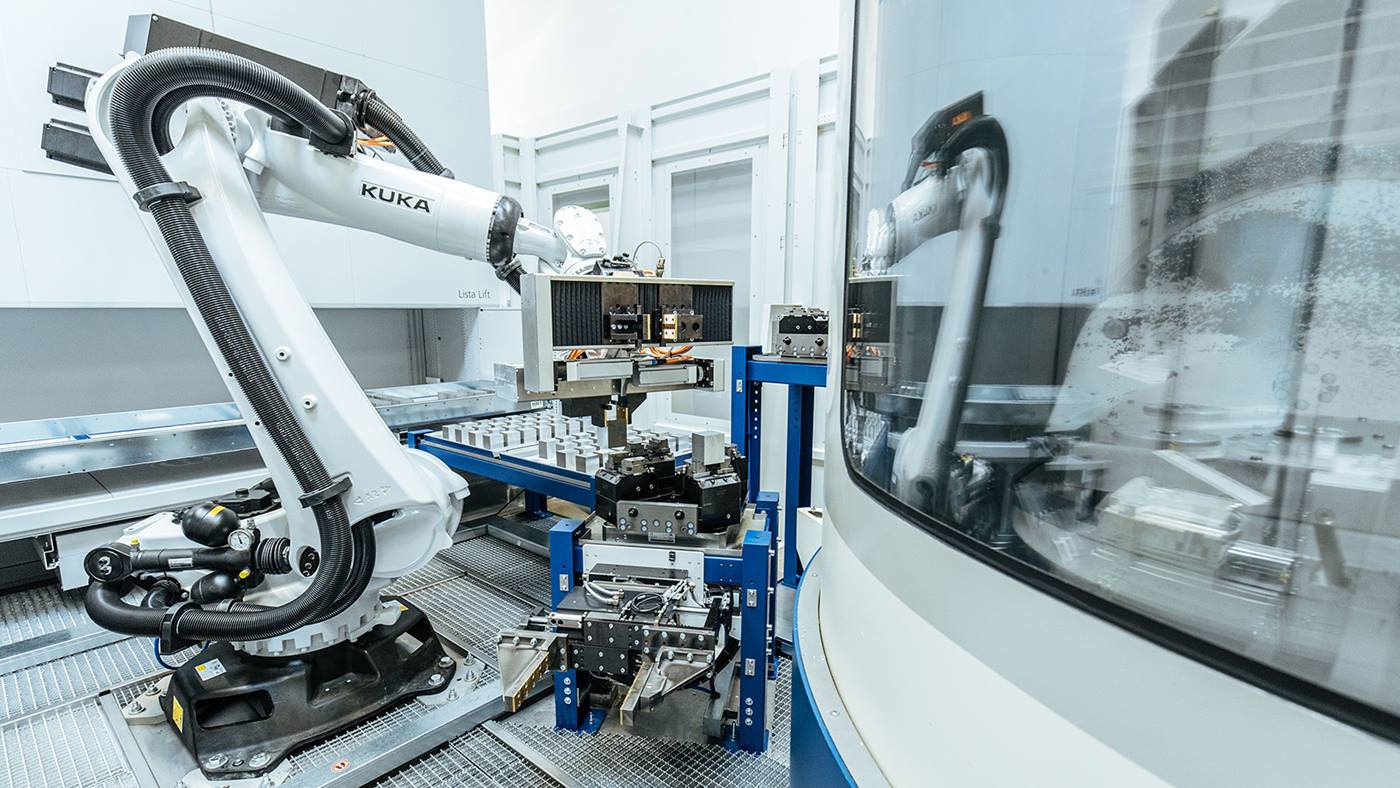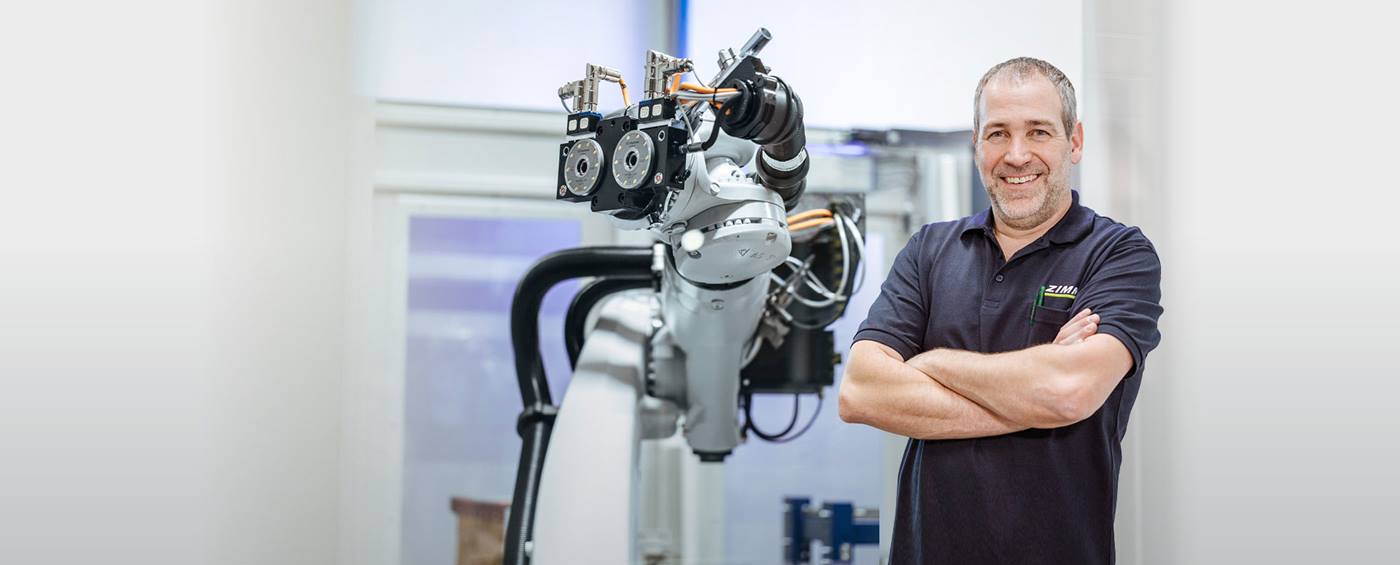Status quo: automated machine loading worldwide
The manufacturing industry in Germany, Europe and the rest of the world is struggling with a shortage of skilled workers and is therefore struggling to maintain production. A global shortage of 85.2 million skilled workers is expected in 2023. Many jobs remain unfilled not only because of demographic change. Employees are increasingly deciding against the physical strain associated with many jobs in industrial manufacturing. This also includes monotonous tasks, such as loading CNC machines.
Many companies are therefore turning to the automation of CNC assembly. In machine tending, the number of cobots is growing. Thanks to their lightweight design and sensors, they enable humans and machines to work together – without additional safety precautions. In Germany, there were 397 industrial robots per 10,000 employees in 2021. In 2019, there were 346 robots. The figures from South Korea illustrate the potential here. The robot fleet there grew from 855 to 1,000 industrial robots per 10,000 employees between 2019 and 2021. More and more companies around the world are addressing the issue of automation. They all have to think about certain requirements.
Five requirements for automated machine loading
More and more small and medium-sized companies –
98.9% of the manufacturing industry in Germany fell into this category in 2020 – are looking for ways to automate their production. But before a cobot is used, automating companies should ask themselves a number of questions to ensure the success of their solution. The following points form the basis for selecting the right system. It goes without saying that KUKA supports the selection process with its experience and expertise. An international network of
KUKA system partners provides additional on-site support in integrating KUKA robot systems individually into the customer's processes.
The task
"Bring A to B": It's never that simple in practice. Production processes differ from company to company, which is why the automation of loading and unloading must be reconsidered in each case. Which machine needs to be loaded? Does the workpiece only need to be placed? Are there people in the robot's work area? Does the correct position of the workpiece need to be checked? These questions set the course for the decision: cobot or industrial robot?
Application example: In HELLER's production facilities, a mobile KUKA robot picks the required tools, inserts them into the production machines and replaces them when they are worn out. It is therefore crucial that the KR CYBERTECH receives information on the tools required and can select them. KUKA robots are characterized by suitable interfaces and intuitive programming.
The environment
How much space is available? Do special guidelines apply, such as in clean rooms or in food processing? Do walkways or routes cross the robot system's working area? Not only the task, but also the space available influence the decision on how companies plan their automation solution.
SMEs often benefit from the compactness and safety that characterize collaborative robots. Sealed-off safety areas are not necessary with cobots. Nevertheless, the dimensions of the robot, the movement radius and the movement axes must be adapted to the space and the task –KUKA and its system partners use their decades of experience in automation projects to weigh up different solutions against each other.
Application example: The automation developer and KUKA system partner MAIROTEC implemented an automation cell that not only quickly and safely loads CNC milling machines with metal bolts, but is also supplied with material by a mobile, autonomously moving platform. Thanks to the safety zones of the LBR iisy, the system does not require a safety zone and is therefore also suitable for small production halls.
The workpiece
Simple metal tubes, delicate circuit boards, irregular plastic objects, difficult-to-grip textiles: the range of workpieces that can be transported is huge. The shape and nature of the workpiece determine the type of gripper – from mechanical two-jaw grippers for cuboid objects to tweezer grippers for particularly delicate workpieces.
However, the weight of the workpieces is also decisive for the selection of the automation solution: KUKA cobots and robots lift different payloads. Weight and shape in turn affect the size and therefore the environmental requirements.
Application example: Material handling requirements in the textile industry are very different from those in the metalworking industry. Fabric parts weigh less, but are more difficult to grip than metal workpieces. With robotextile, KUKA has developed a gripper that uses air pressure and sensors to pick up individual lengths of fabric and feed them to the sewing stations. The aim of robotextile is to use intelligent automation in the textile industry to bring jobs back to Germany and keep them here.
The capacity utilization
"Is it worth buying a cobot?" SMEs in particular ask themselves this question, as there is often a misconception that a robot solution can only be used for one work step. There is a great fear that the system will not be fully utilized and therefore unprofitable. Thanks to the intuitive iiQKA.OS operating system and the Robotic Republic ecosystem, KUKA cobots can be programmed for different tasks in the company. From the rapidly growing range of hardware and software components, users can put together individual automation packages that are safe, compatible and quickly ready for use. The aim is to make robotics available to everyone. A positive side effect: thanks to their great flexibility, robot solutions from KUKA also work profitably with small batch sizes.
Application example: The MAIROFlex iisy not only equips a CNC milling machine – it can be reprogrammed to another location, other workpieces and other machines within a few minutes. The Robotic Republic also provides users with the software and hardware to meet any requirement: "The MAIROFlex iisy automation cell can operate almost anything, even a coffee machine," jokes MAIROTEC Managing Director Andreas Mathes.
The process of integration
Fast and smooth: This is how the changeover to robot-assisted machine loading should take place. Does the planned solution guarantee minimal machine downtime? Can the commissioning be carried out by the customer or do external technicians have to be on site?
KUKA aims to make integration as easy as possible. Detailed manufacturer instructions and documentation as well as preliminary training support the commissioning of cobots or robot systems. iiQKA, operating system and business ecosystem in one, enables companies to install and program robots themselves.
For more complex applications, the international network of KUKA system partners provides further assistance: experts on site and specialists support all phases of the project – development, planning, installation, test run, operation and maintenance.
Application example: "30 minutes from unpacking to finished programming," is how Bastian Fest sums up the commissioning of the KUKA LBR iisy. The managing director of FMO Surface believes that this is exactly what medium-sized companies are looking for. The KUKA control elements also ensure that even employees with no previous experience of robotics can operate the cobot.
Conclusion: opportunities for the manufacturing industry
The willingness to automate worldwide is and remains high. In an international comparison,
Germany ranks fifth behind China, Japan, Korea and the USA with a robot population of 38 %. The shortage of skilled workers is just one reason why more and more SMEs are using robots in production. International automation experts such as KUKA are ensuring an increase in new installations thanks to ever simpler installation and customized solutions. According to Handelsblatt,
more than 550,000 robots will be put into operation worldwide in 2022 – and the trend is rising. If there is no solution for automatic machine tending yet, automation enthusiasts should take a close look at the task at hand.

